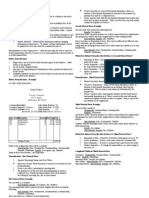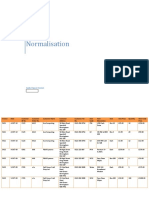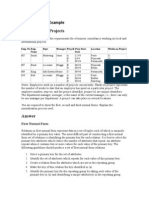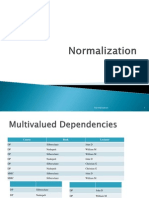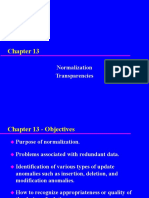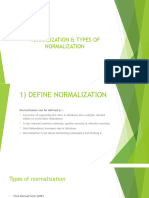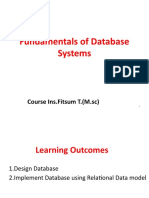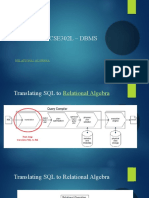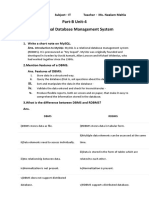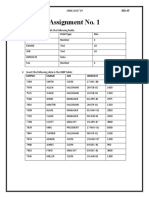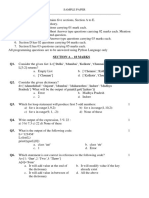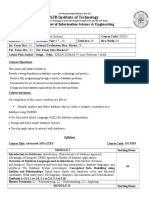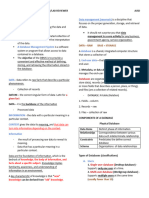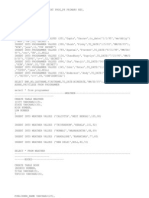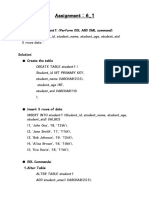0% found this document useful (0 votes)
76 views12 pagesDatabase Normalization Guide
The document discusses normalizing a package shipment database table from unnormalized to 3rd normal form. It begins with an unnormalized table containing repeating groups that violate 1st normal form. To achieve 1st normal form, the repeating groups are removed by splitting the table so each row represents a single shipment. Dependencies between attributes are then removed to achieve 2nd and 3rd normal form, eliminating anomalies like modification and deletion anomalies. The goal is an accurate and constrained representation of the data and relationships.
Uploaded by
chandan_2009Copyright
© Attribution Non-Commercial (BY-NC)
We take content rights seriously. If you suspect this is your content, claim it here.
Available Formats
Download as DOCX, PDF, TXT or read online on Scribd
0% found this document useful (0 votes)
76 views12 pagesDatabase Normalization Guide
The document discusses normalizing a package shipment database table from unnormalized to 3rd normal form. It begins with an unnormalized table containing repeating groups that violate 1st normal form. To achieve 1st normal form, the repeating groups are removed by splitting the table so each row represents a single shipment. Dependencies between attributes are then removed to achieve 2nd and 3rd normal form, eliminating anomalies like modification and deletion anomalies. The goal is an accurate and constrained representation of the data and relationships.
Uploaded by
chandan_2009Copyright
© Attribution Non-Commercial (BY-NC)
We take content rights seriously. If you suspect this is your content, claim it here.
Available Formats
Download as DOCX, PDF, TXT or read online on Scribd
/ 12













